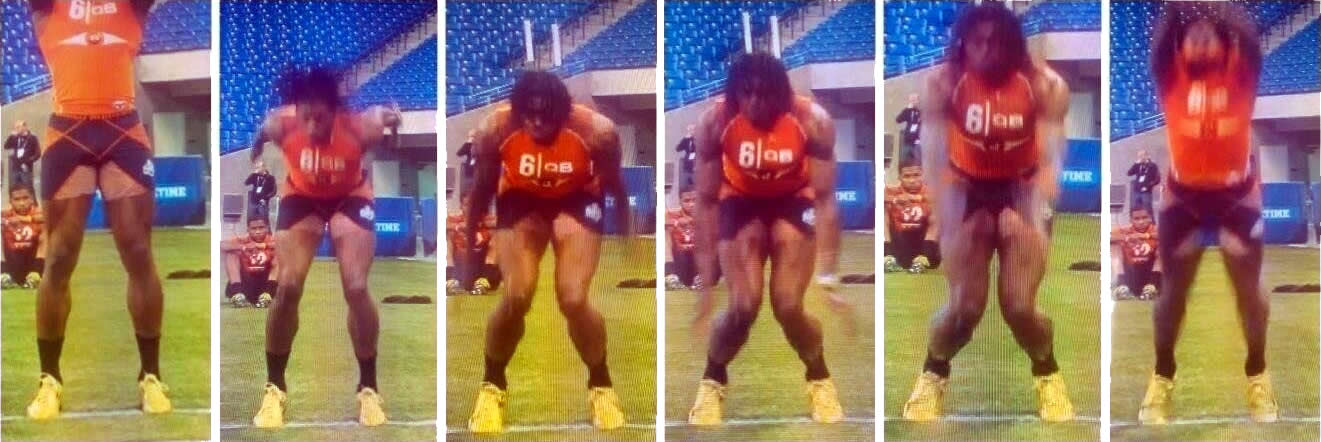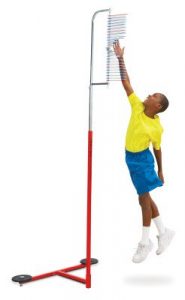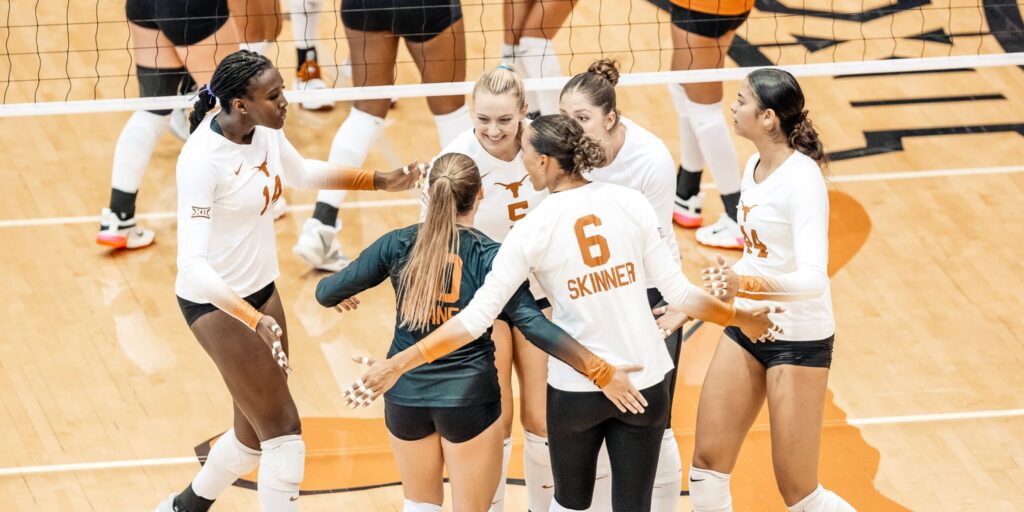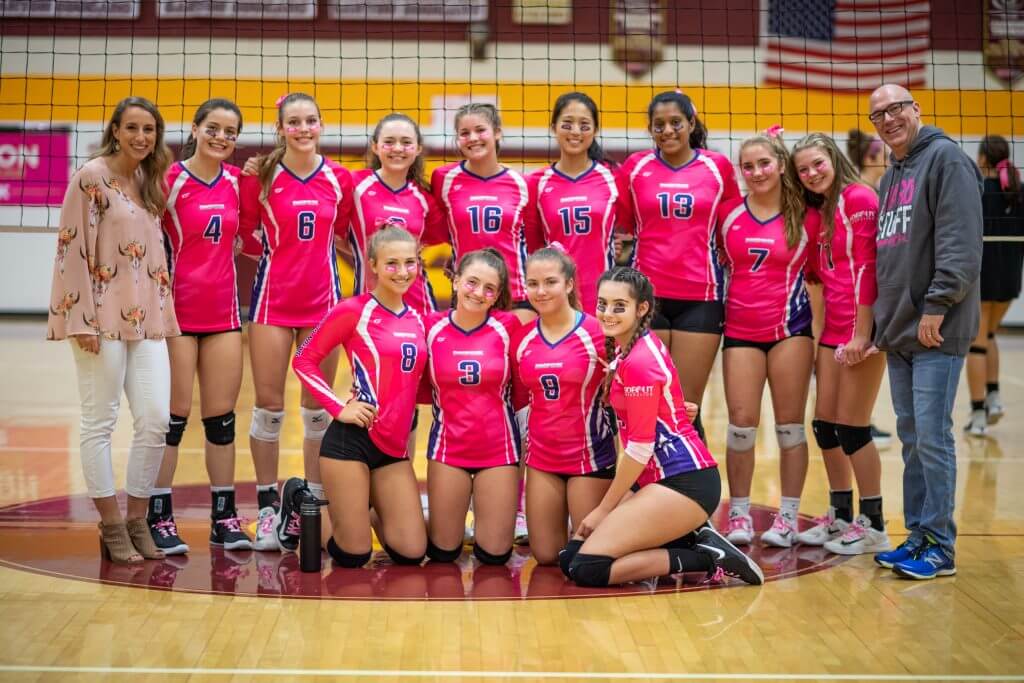Here at SAPT volleyball players abound. Volleyball players (and their coaches) often come to us with one goal: to increase their vertical jump height. Personally, I think there are several other skills that are just at important, i.e. upper body strength/power, ability to shuffle sideways- you’d be surprised how many girls I see who CANNOT do this- core strength and force transfer, and improving overall athleticism. But I digress.

While there are whole books devoted to increasing vertical jump, I’m only going to focus the basic technique that will, honestly, improve the jump considerably. I think it should be obvious that to increase height, one must also increase their strength (ahem, lift heavy things) but that’s not today’s focus. Next week, we’ll look at specific strength training exercises.
Our typical age range for VB players is 13-18 and this is the typical jump technique we see:

While there are whole books devoted to increasing vertical jump, I’m only going to focus the basic technique that will, honestly, improve the jump considerably. I think it should be obvious that to increase height, one must also increase their strength (ahem, lift heavy things) but that’s not today’s focus. Next week, we’ll look at specific strength training exercises.
Similar to the above picture, when we evaluate a volleyball player 99% of the time we see valgus collapse (knees coming together- helloooo ACL tear!), knee-flexion dominance, loosey-goosey core, and usually, minimal arm swing involvement.
All these work against the poor girl and her goal of leaping high aloft to spike the ball into her opponent’s face. I’m going to briefly break down the mechanical flaws previously mentioned and then present a few drills we use to re-pattern the jump to create leaping, jumping, ball-spiking machines.

- Valgus collapse: When one’s knee caps touch, it results in a decrease in power since the quads, hamstrings, and glutes are at a mechanical disadvantage. Try it, you won’t get up very high. What’s worse, is it dramatically increases the risk of an ACL, or two, tear. As you read this, stand up, bend your knees, then put them into valgus collapse. Do you feel a little bit of torque on your knees? Now imagine launching into the air and landing again (which landing is roughly 2-4x bodyweight force) in that position. Yikes. Is it any wonder that many volleyball players have knee pain? The knees should be neutral, aligned directly over the 2nd or 3rd toe.
- Knee/Quad Dominance: Most girls are quad dominant. It’s not their fault, that’s just how they grew up. At SAPT we aim to change that. As any long-time reader of our blog knows, it’s all about dem glutes!

The posterior chain, that is, the glutes and hamstrings, are where it’s at when it comes to lower body power production. The glutes and hamstrings are way, way, WAY better at extending the hip than the quads (mostly because, the quads can’t do it at all). Quads are important in the vertical jump- as is knee extension- however, the power comes from the back. Athletes who don’t tap into their posterior chain will remain on the lower end of the VerTec.
- Loosey-Goosey Core: That is a technical coaching term by the way. A lot of our VB players don’t know how to stay tight during the take-off. All the power they applied to the floor disseminates and leaks out at all the loose points so they wind up going nowhere. Imagine a cooked spaghetti noodle trying to jump and that’s what it looks like.
- Little to no arm swing: How people learn to jump without using their arms is a mystery to me. The arms help increase velocity at take off by storing potential energy in the arms and then releasing it upon take off. They also help “pull” the body upwards. Don’t believe me? Some one did a research study and you can read the abstract here.
So, how do we fix all this?
First we teach hip hinging without knee valgus collapse. The easiest way we’ve found is employing a dowel rod.
Coaching points:
- The athlete should maintain contact with the dowel rod at three points: head, mid-back, and tail bone.
- Knees should be behind the toes. I will put my hand in front of their knees to ensure they sit back in the hips and not bend forward from the knee. We also coach neutral knee alignment here.
- The athlete should maintain contact with the dowel rod at three points: head, mid-back, and tail bone.
Next, we put the hip hinge in context of a take-off/landing, but no jump. By eliminating the jump, the athlete can focus on his/her form.
Coaching points:
- Arm swing, arm swing, ARM SWING! I tell the athlete to pretend she’s pushing through water. The arm swing should be forceful.
- The hip hinge should be there, the knees should be neutral and behind the toes, just like the dowel rod hip hinge drill. I use the analogy of booty-bumping their friend. Girls get this, guys don’t. I guess fellas don’t booty bump.
- This is a perfect time to teach tightness. The athlete’s core should be taut and the spine should remain neutral. This is where the limp noodles happen, so be vigilant!
- Arm swing, arm swing, ARM SWING! I tell the athlete to pretend she’s pushing through water. The arm swing should be forceful.
After the athlete masters the arm swing + hips, we move to a paused vertical jump. Again, the pause is there for the athlete to focus on the form before taking off. If they’re not in the right position, they can fix it- or rather, you the coach can fix it.
Coaching points:
- Stress to the athlete that it’s NOT about the height of the jump, but the technique. I’ve seen girls with great technique fall to pieces as soon as the jump is part of the equation.
- The landing should look like the take-off 3. Hammer all the above mentioned technique points.
- Stress to the athlete that it’s NOT about the height of the jump, but the technique. I’ve seen girls with great technique fall to pieces as soon as the jump is part of the equation.
Practice makes permanent, not perfect.
These three drills are SAPT’s basic jump technique teachers. We’ve seen great results and many girls add inches to their vertical just by becoming more efficient at the jump itself. I’d also like to point out that none of these use fancy equipment. So often it’s the simplest way that is the most effective!
Next week we’ll take a look at both strength exercises to increase vertical and some more specific drills for power production.





